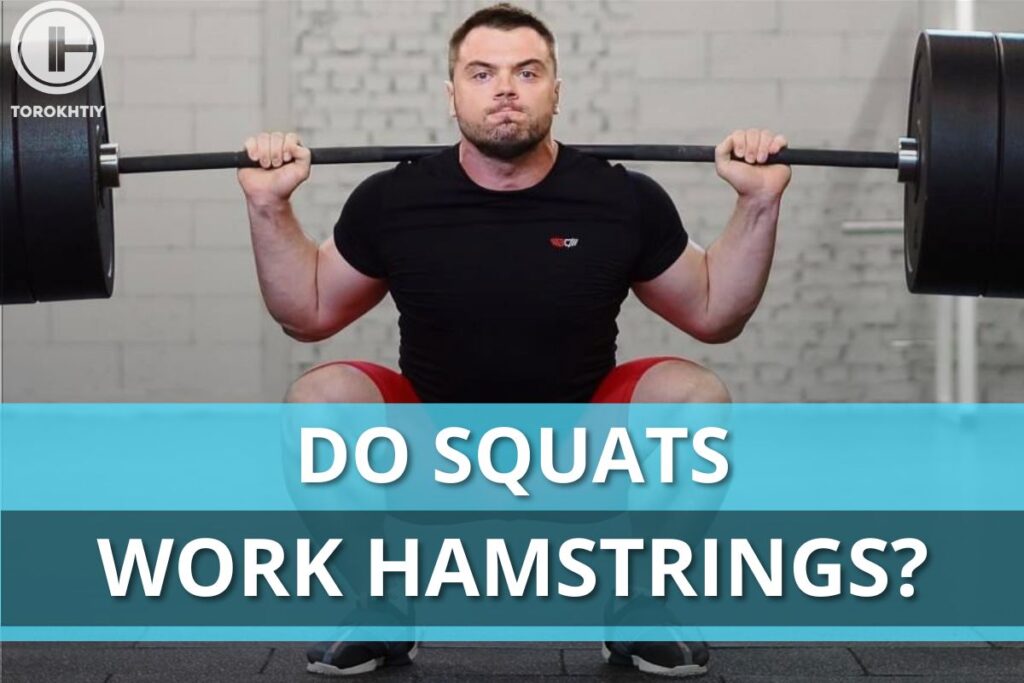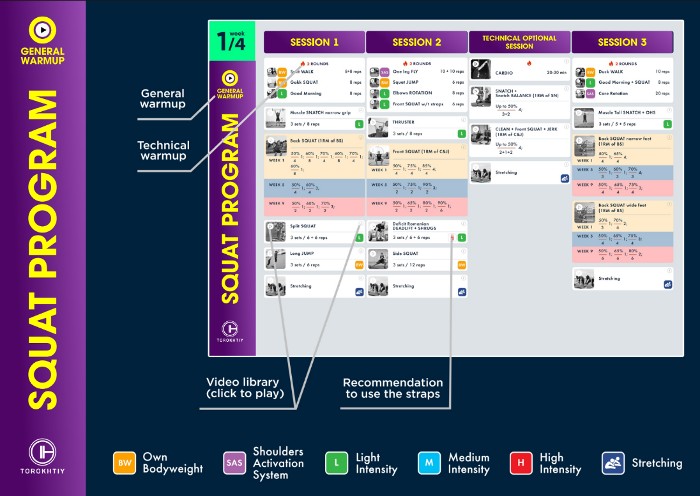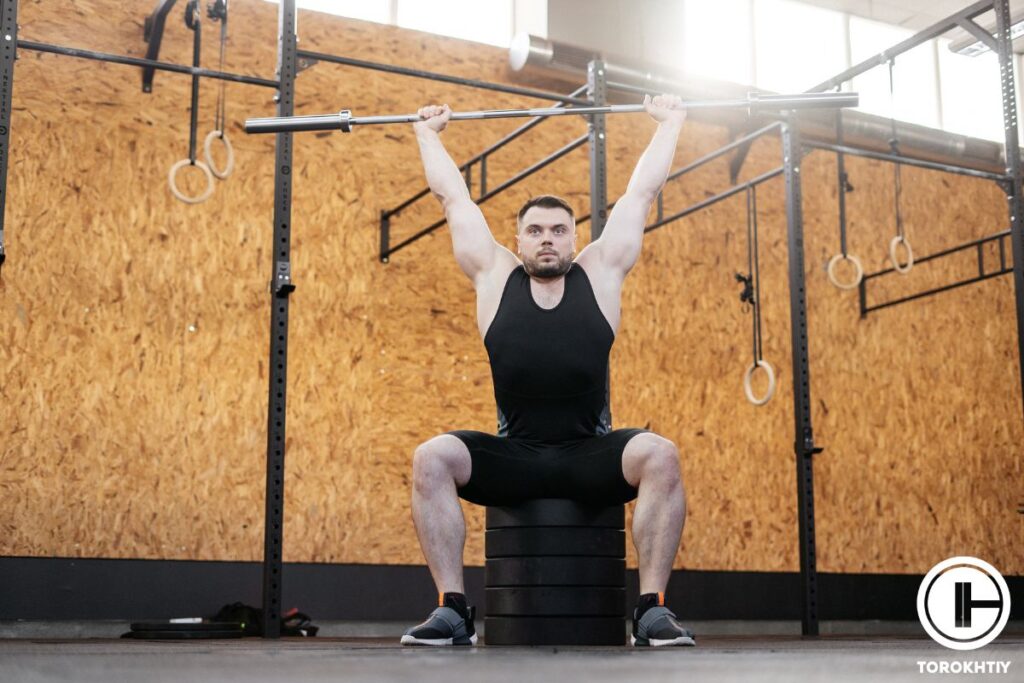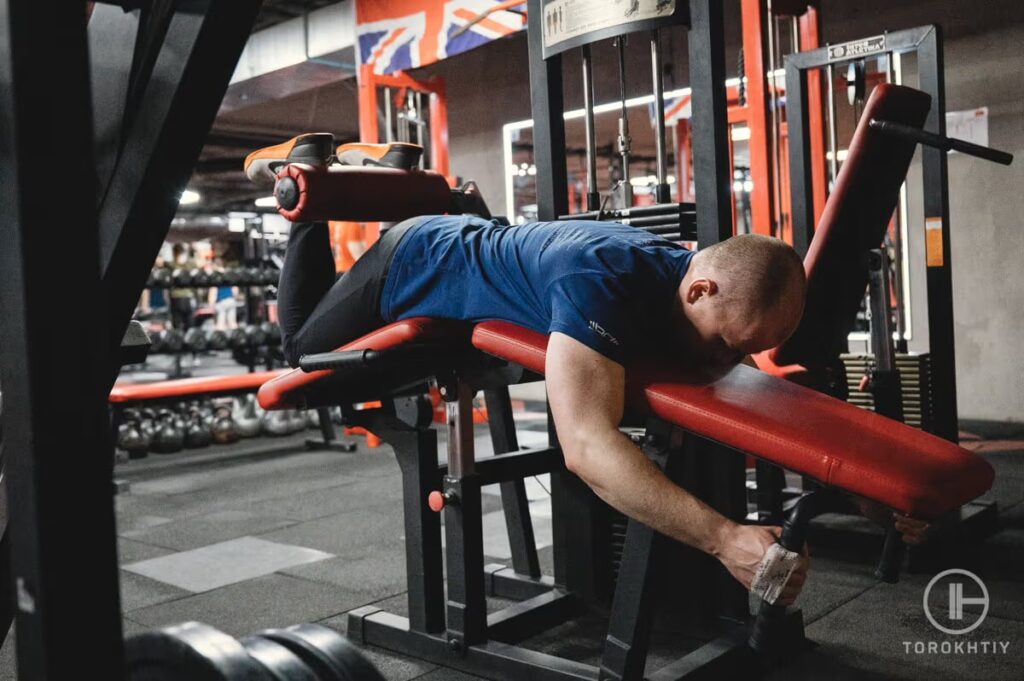Do Squats Work Hamstrings? Which Squat Type to Choose?
Author:
Reviewed by:
(21 years of Oly Lifting experience)
Unlock your full potential by engaging with our experts and community! Have questions about your fitness journey or looking for expert advice on weightlifting techniques? Don’t hesitate — leave a comment below and Sergii Putsov will provide a personalized answer and insights to help you reach your goals.
Torokhtiy is reader-supported. Some links are affiliate links, and we may earn a commission at no extra cost to you. See our disclosure page for details.
The squat is a stable exercise, effectively helping you build stronger legs. This is vital in several sports and to help keep people mobile as they age. Studies show better mobility is linked with higher life quality in old age.
It’s never too early to start squatting, a natural movement. However, you need to understand what the squat does and doesn’t do. For example, do squats work hamstrings? Let’s find out.
Do Squats Work Hamstrings? The short answer is no. Squats target your quads, glutes, and hip abductors, the length of the hamstring barely changes during the squat. The engagement of the hamstring is minimal. They do help stabilize the squat with some types of squats more effective at training hamstrings.

What Muscle Groups Make Up Hamstrings?
The hamstring sits just behind your thigh muscle. There are three muscles which make up the hamstring:
1. Biceps femoris
This is the outside muscle, it enables the flexing of your knee, allows you to extend your thigh from the hip, and rotates your lower leg, allowing it to move side-to-side.
2. Semimembranosus
This is the inside hamstring muscle, closest to the center of your body. It supports the biceps femoris and allows you to straighten your hip.
Follow us!

Free!
Get a 2-week Weightlifting Program as a bonus for the subscription to kickstart your training plan!

Free!
3. Semitendinosus
This muscle simply sits between the biceps femoris and the semimembranosus; facilitating their movement.
Activation of Hamstrings While Squatting
To properly understand squats for hamstrings and do squats work hamstrings, you need to understand how the squat activates this muscle group.
At this stage, we’re talking about the standard squat. Studies show that hamstring activation is minimal. This is because the hamstrings extend the hip and flex the knee.
Any exercise that extends the hip will activate the hamstring. Equally, so will any exercise which flexes the knee.
The squat extends the hip and simultaneously flexes the knee. This means the length, and therefore strain on the hamstring barely changes.
It’s why the answer to “Do squats build hamstrings” is no. However, studies show that deep squats may be significantly better at training your hamstrings.
Of course, other studies show that deep squats still won’t train your hamstrings effectively.
Do Squats Work hamstrings?
Many people ask are squats more quads or hamstrings. The simplest response is that they work the quads much harder than the hamstrings. However, there are variations of the squat which focus more on the hamstrings.
The squat is an excellent exercise if you’re looking to increase the size of your quads, glutes, and hip abductors. Research shows that undertaking squat training for 12 weeks saw a 4-7% increase in the size of participants’ quads. But, only a 1-3% increase in hamstring size.
In short, squats help the development of hamstrings but they don’t activate them enough to keep pace with the surrounding muscles.
As your quads, glutes, and hip abductors get stronger, you’ll create an imbalance with your hamstrings, increasing the likelihood of injuring your hamstring or knee.
🔻GET A FREE PROGRAM DEMO: 12 Week Squat Program by Oleksiy Torokhtiy

Do you want to double your squat strength? In just 12 weeks, you’ll be able to boost your squat results.
Enter your details and get a free demo (1 free week) of the squat program straight into your inbox.
Which Squat Is Best For Working Hamstrings?
Everyone looking to strengthen their legs should be thinking about exercises which build hamstrings. Fortunately, the right squat can help with this.
The following hamstring-focused squat exercises will target hamstrings more than the standard squat:
1. Low Bar Squat
This is similar to the standard back squat. The main difference is the bar sits lower on your back, around the top of the rear delts.
It forces the hips to sit back further and you to bend your knees less, increasing the load on the hamstrings.
2. Box Squat
This is similar to the low bar squat. The biggest difference is you have a box behind you. The box should be positioned so that when you sit on it, your hip crease is just below the knee.
Knowing the box is there and sitting on it means you will lean back more into the squat, activating your hamstrings in the same way as the low bar squat.

3. Front Foot Elevated Split Squat
This squat variant works best with dumbbells. Take one in each hand and make sure there is a small block in front of you. Six to twelve inches high will do.
Your front foot goes on the block, the dumbbells are by your sides, and your other leg goes behind you, similar to a lunge position.
It minimizes the knee bend and forces your hamstrings to do more of the work.
4. Plate Loaded V Squat
This squat requires a dedicated machine. You lean back onto the machine and it acts as a support when squatting. The way it curves as you move up and down pushes your hips back and increases focus on the hamstrings.
5. Kang Squat
This is a common variant used by Olympic weightlifters, specifically as a warm-up. The bar sits on your back and your feet are about hips-width apart.
You then push your hips back and bend your knees slightly, moving your back toward parallel with the floor.
Then, squat deep, this involves pushing your knees forward and your hips back.
How Does the Squat Compare To Other Hamstring Exercises?
Squats for hamstrings can help them develop. However, if you really want to improve the strength and size of your hamstrings, you need to include exercises that are better at targeting your hamstring.
The following 5 are superior to squats for hamstrings.
1. Good Morning
The good morning is a good example of squats for hamstrings that work. You start in the classic squat position with the barbell resting on your back and your feet hip-width apart.
Bend your knees slightly as you tilt at your hips, the aim is to get your back parallel to the floor. You’ll feel your hamstrings stretching.
You can drop into a squat after if you wish.
2. Romanian Deadlift
The Romanian deadlift involves you starting from a position where your hips are pushed out and your back is parallel to the floor. The bend in your knees is minimal, focusing more attention on your hamstrings.
3. Leg Curl
The leg curl requires you to lie on a bench and hook the back of your ankle under the bar. You then bend your knee, bringing your feet toward your buttocks. This will target your hamstrings.

4. Nordic Hamstring Curl
This exercise is commonly used by sprinters and other athletes who run fast. You’ll need a partner to hold your feet on the ground.
All you have to do is kneel on the floor and, while your partner is holding your feet, bend forward toward the ground. As your hamstrings and core get stronger you’ll get closer to the ground.
5. Hang Snatch
The hang snatch is an Olympic lift. The movement doesn’t start on the floor, instead, it starts with the barbell just above your knee. You then lift the bar above your head while dropping into a squat, before pushing yourself to standing.
This places more emphasis on the hip movement than the knee, increasing the load on your hamstrings.
FAQ
Check out the most frequently asked questions and let us know what else you need to know!
Are squats good for a pulled hamstring?
Hamstring injuries are surprisingly common. As the standard squat places little strain on the hamstrings, it can be a good way to help them recover after an injury.
Should you feel squats in your hamstrings?
While some variants are acceptable as squats for hamstrings, the squat should generally trigger a burn in your quads.
Widening your stance can help to shift the attention to your hamstrings and may result in feeling them a little more.
Do weak hamstrings affect squat?
A weak hamstring won’t affect the basic squat too much. However, weak hamstrings and glutes can become an issue when you are squatting with heavier loads. You’ll generally struggle to push back up from the bottom position.
That’s why you should train all your leg muscles and keep them balanced.
Conclusion
Do squats work hamstrings? Yes, but minimally. There are other exercises which are better for your hamstrings, as shown above.
That doesn’t mean you should give up on your squats! They are still an important part of leg strengthening. You simply need to add hamstring exercises to your routine.
Try them today and let us know the results!
Also Read:
- What Muscles Do Squats Work? (Lifting Coach Explains)
- How to Breathe During Squats? Techniques and Exercises
- How To Increase Squat Weight (Tips & Exercises from PhD)
- Do Squats Work Calves? Variations & Alternatives Explained
- Squat Pyramid: What Is It & How To Create Your Own
- Safety Bar Squats: Form & Benefits Explained
- Spotter’s Handbook: How to Spot a Squat?
- Best Squat Warm-Up For Peak Performance
References:
- Pantelaki, E., Maggi, E., & Crotti, D. (2021). Mobility impact and well-being in later life: A multidisciplinary systematic review. Research in Transportation Economics, 86, 100975. https://doi.org/10.1016/j.retrec.2020.100975
- Weiss, L.W.; Coney, H.D.; and Clark, F.C. (2000). Gross measures of exercise-induced muscular hypertrophy. Journal of Orthopaedic and Sports Physical Therapy, 30(3), 143-148.
- Escamilla RF. Knee biomechanics of the dynamic squat exercise. Med Sci Sports Exerc. 2001 Jan;33(1):127-41. doi: 10.1097/00005768-200101000-00020. PMID: 11194098.
- Isear JA Jr, Erickson JC, Worrell TW. EMG analysis of lower extremity muscle recruitment patterns during an unloaded squat. Med Sci Sports Exerc. 1997 Apr;29(4):532-9. doi: 10.1097/00005768-199704000-00016. PMID: 9107637.
- Bloomquist K, Langberg H, Karlsen S, Madsgaard S, Boesen M, Raastad T. Effect of range of motion in heavy load squatting on muscle and tendon adaptations. Eur J Appl Physiol. 2013 Aug;113(8):2133-42. doi: 10.1007/s00421-013-2642-7. Epub 2013 Apr 20. PMID: 23604798.
- Photos made by Torokhtiy Media Team
Why Trust Us?
With over 20 years in Olympic weightlifting, strength training, nutrition coaching, and general fitness our team does its best to provide the audience with ultimate support and meet the needs and requirements of advanced athletes and professional lifters, as well as people who strive to open new opportunities and develop their physical capabilities with us.
By trusting the recommendations of our certified experts in coaching, nutrition, and sports training programming, as well as scientific consultants, and physiotherapists, we provide you with thorough, well-considered, and scientifically proven content. All the information given in the articles concerning workout programming, separate exercises, and athletic performance, in general, is based on verified data.
The product testing process is described in more detail here.
Author: Sergii Putsov
Head of Sport Science, PhD
Best Results: Snatch – 165 kg,
C&J – 200 kg
Sergii Putsov, Ph.D., is a former professional weightlifter and National team member, achieving multiple medals in the 94 kg weight category at national competitions. With a Master’s degree in “Olympic & Professional Sport Training” and a Sport Science Ph.D. from the International Olympic Academy, Greece, Sergii now leads as the Head of Sport Science. He specializes in designing training programs, writing insightful blog articles, providing live commentary at international weightlifting events, and conducting educational seminars worldwide alongside Olympic weightlifting expert Oleksiy Torokhtiy.
Reviewed by: Oleksiy Torokhtiy
Olympic Weightlifting Champion, PhD in Sport Science
Best Results: Snatch – 200 kg,
C&J – 240 kg
Oleksiy Torokhtiy is a professional athlete boasting 20 years of experience in Olympic weightlifting. With multiple European and World titles under his belt, he has showcased his prowess in two Olympic Games (Beijing 2008 and London 2012). Upon concluding his illustrious career, Oleksiy dedicated himself to coaching. By 2022, he had conducted over 200 weightlifting seminars worldwide. He is the visionary behind an international sportswear and accessories brand known for its motto, “Warm Body Cold Mind.” Additionally, he is an esteemed author and the creator of a series of training programs and eBooks.




Still have questions after reading our article? Unlock your full potential by engaging with our experts and community! Don’t hesitate — leave a comment below and Sergii Putsov will provide a personalized answer and insights to help you reach your goals.